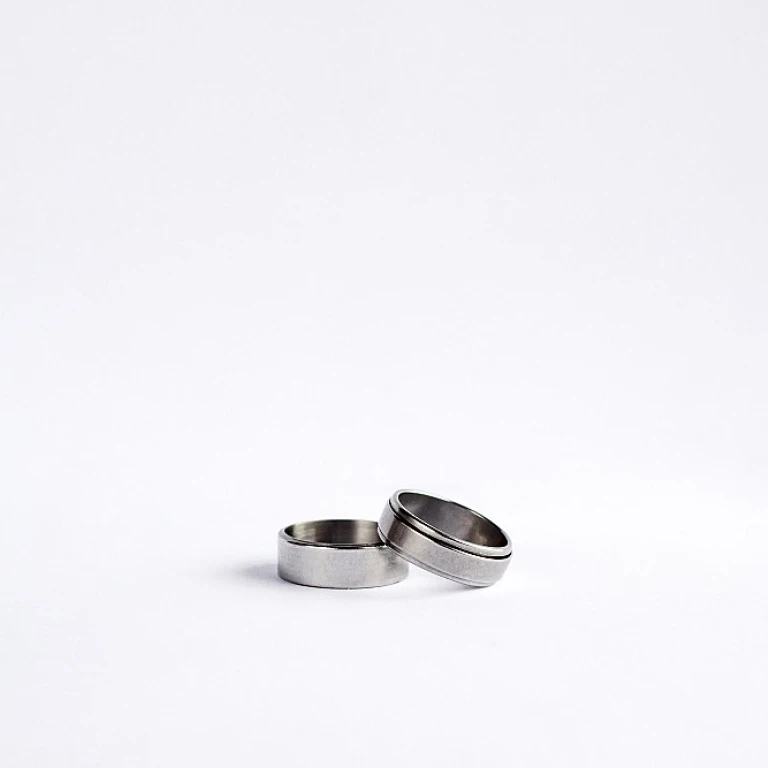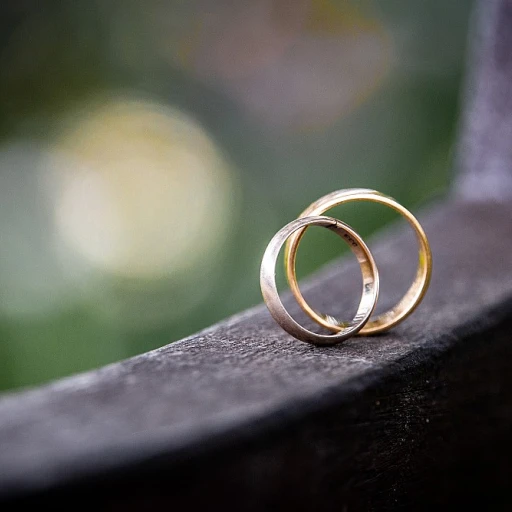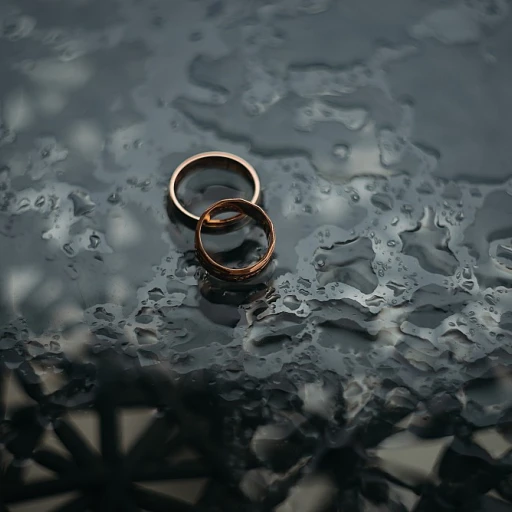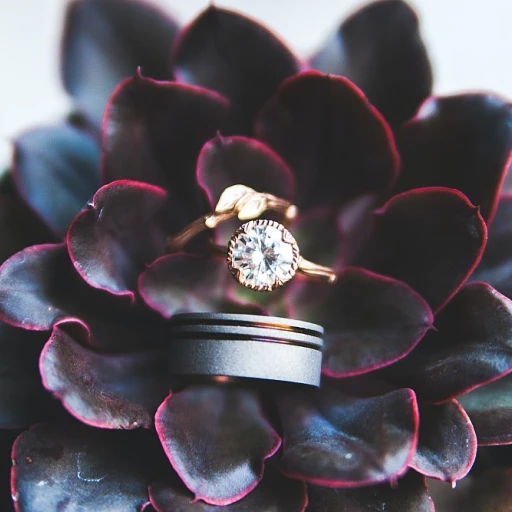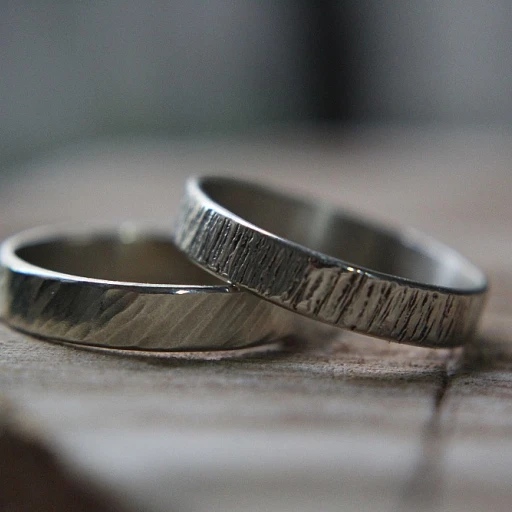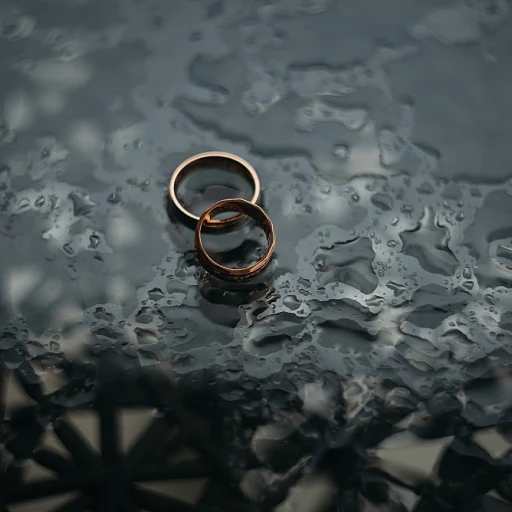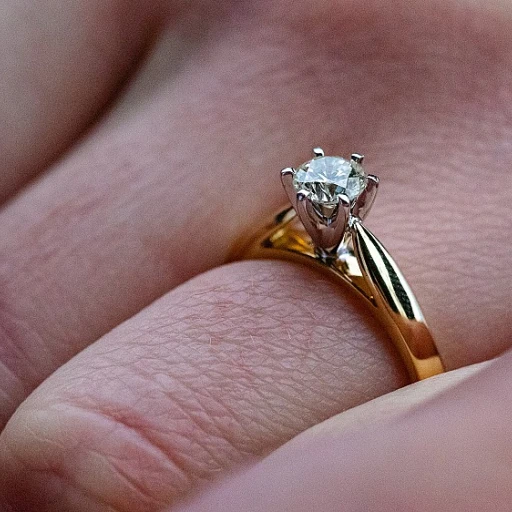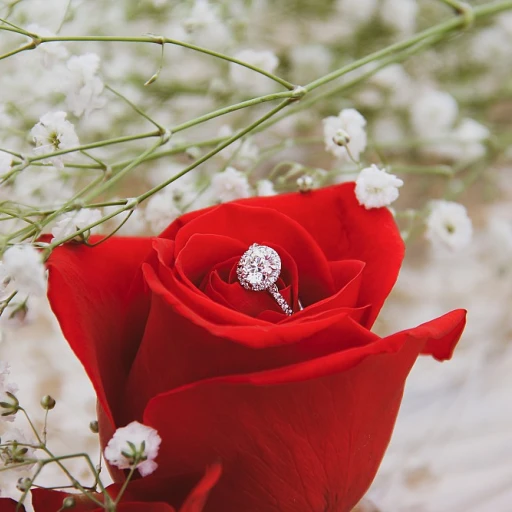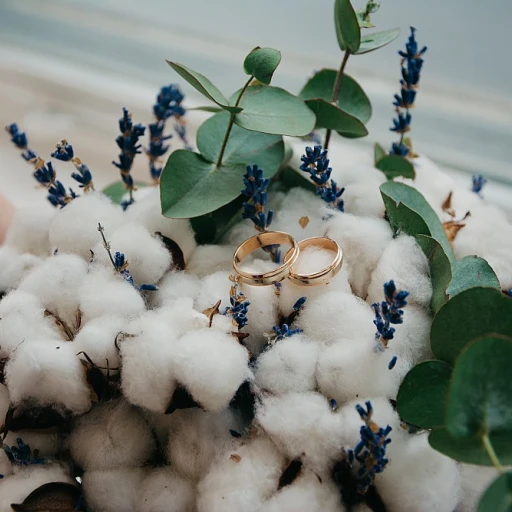Gold Purity Explained: What Does Karat Really Mean?
Unlocking the Mystery of Gold Purity
When we say 'karat,' what springs to mind? Is it a shining gold wedding band that glimmers with every hand gesture? A karat is not to be confused with a 'carat,' which measures the weight of diamonds. The karat, represented by a 'K,' signifies the purity of gold. Pure gold is noted as 24K, signifying 24 parts gold out of a possible 24. This high level of purity means that 24K gold is naturally softer and more malleable, making it less suitable for jewelry that withstands the test of time, like wedding rings.
How Karat Choices Craft Lifetime Memories
In the enchanting world of wedding bands, the karat choice of gold is more than just a number – it reflects the eternity of love. It's a known fact that 14K and 18K gold are preferred for wedding rings, showing that these specific karat golds have the ideal balance between purity, resilience, and brilliance. Statistics indicate that 14K gold comprises approximately 58.3% pure gold, with the remaining alloy made of durable metals such as copper and silver, which bolsters the ring’s strength.
The Financial and Emotional Equation of Gold Rings
Gold is an investment, in both financial and emotional terms. The price of gold fluctuates daily and is influenced by market conditions. However, beyond the price tag lies the true value of a wedding band - its sentimental worth. The cost of gold within your wedding ring represents both the market value and the craftsmanship that turns raw gold into an exquisite symbol of love. One should weigh the value carefully, as the choices you make may affect the heirloom potential of your treasured band.
Gold: The Color of Your Country
Opting for your perfect shade of gold goes well beyond appearance. Are you drawn to the classic warmth of yellow gold, the cool elegance of white gold, or perhaps the romantic hue of rose gold? Each carries its own symbolism and cultural significance. For example, in some Asian cultures, yellow gold is traditional and signifies prosperity and fortune, essential qualities in a marriage. Contrarily, in Western societies, white gold often represents a more modern and sleek aesthetic, aligning with contemporary design preferences.
The Eternal Shine: How Karat Choice Affects the Longevity and Brilliance of Your Wedding Ring
Deciphering Karat: The Measure of Gold’s Purity
When commencing the journey of selecting the perfect wedding ring, understanding the significance of 'karat' becomes pivotal. A karat is a unit of measurement used to describe the purity of gold, with 24-karat gold representing pure gold. However, pure gold is soft and pliable, necessitating alloys for strength. Hence, wedding rings are typically found in 18-karat, signifying 75% purity, 14-karat at 58.3%, and 10-karat at 41.7% gold content. These standards ensure that your symbol of eternal love epitomizes both beauty and durability.
According to the World Gold Council, the global gold demand in the jewelry sector was over 2,000 tonnes in recent years. This statistic underscores the importance of careful consideration when choosing the karat level, balancing aesthetics and resilience within your wedding band.
From Ore to Heirloom: The Alchemy of Gold Alloying
The art of alloying transforms pure gold into a metal suitable for daily wear. By amalgamating gold with other metals like silver, copper, or zinc, artisans create varied hues and strengths. This magical process not only fortifies the band but introduces a spectrum of color options, from the classic yellow to modern white and romantic rose golds. These options allow couples to choose a tone that truly resonates with their style and story.
With 49% of couples looking for unique ways to personalize their wedding bands, according to a survey by The Knot, the alloy mix plays a substantial role. It becomes not just a blend of metals but a metaphor for the blending of two lives.
The Impact of Karat on Everyday Wearability
The choice of karat is more than a statement of luxury; it's a practical decision impacting the ring’s wearability. Lower karat gold, being harder and more resistant to scratches, is well-suited for active lifestyles. On the contrary, higher karat rings, with their softer composition, call for gentle care to maintain their refined shine over the years.
In 2020, Jewelers of America cited that rings in the 14 to 18-karat range are popular choices, striking a balance between opulence and function. This is a key consideration for betrothed couples, ensuring that their ring endures as a legacy of love through the rigors of time.
Weighing Value and Sentiment: Understanding the Price of Gold in Your Wedding Ring
The Impact of Karat on Your Ring's Timeless Glow
When embarking on the sacred journey of marriage, choosing the perfect gold wedding band is pivotal. Karat, a term frequently encountered yet often misunderstood, stands as a monumental factor in determining the longevity and brilliance of your ring. Statistics from the jewelry industry reveal that 14-karat gold is favored for wedding bands due to its optimal blend of durability and purity. According to a survey by The Knot, an authority on wedding trends, over 60% of couples opt for this mid-range karat for their bands, blending resilience with preciousness.
Durability and Allure: The Balancing Act of Gold Karats
Different karats come with varied compositions; the higher the karat, the greater the quantity of pure gold. Yet, this increase in fineness can lead to a decrease in the durability of your wedding ring. An insightful quote from a master jeweler, "Higher karat gold delights the eye with its radiance but requires a gentler touch in life's daily wear." Hence, it is essential to strike a balance–a 22-karat ring may offer a rich golden hue, but a 14-karat piece provides the strength necessary for everyday wear. Industry data indicates a mere 10% preference for higher karats, which underscores the practical choices couples make.
The Real-World Performance of Gold Rings: Karat Considerations
- - 24K: 100% pure gold, often deemed too soft for daily wear
- - 18K: Contains 75% gold, offering a nice compromise between softness and durability
- - 14K: Made up of 58.3% gold, it's widely chosen for its resistance to scratching and denting
- - 10K: With 41.7% gold, it's the most durable option, yet contains the least gold
As couples peruse options, the 'eternal shine' of the ring must not only reflect their love but also withstand the test of time. The distinction in karat leads to a discernible difference in appearance and wearability. For instance, a 14-karat ring, while less resplendent than its 18-karat counterpart, often manifests as the superior choice for those with active lifestyles, according to industry testimonials.
Exemplifying Karat Choice Through Real-Life Affirmations
Drawing from examples, the karat choice becomes a narrative of one's love story. Take, for example, Emma and Sam who, after exploring various options, found their perfect match in an exquisite 14-karat gold band, marrying aesthetic charm with functional pragmatism. This reflection of their pragmatic yet romantic decision-making has been echoed by countless couples seeking both beauty and endurance in their symbol of unity. Statistics from jewelry stores affirm that such pragmatic yet heartfelt choices are at the heart of modern marriage sentiments.
Choosing Your Gold: A Personal Decision Beyond the Luster
Weighing the Financial and Emotional Worth of Gold Bands
When couples seek the perfect symbol of their love, gold wedding bands emerge as a timeless choice. The price of gold, a precious metal measured per ounce, fluctuates with market conditions, directly impacting the cost of your wedding ring. The World Gold Council reports that the average price of gold has seen a notable increase over the past decade, illustrating the economic dynamics at play. Embedding this reality into your love story requires an understanding that the wedding band's sentimental value transcends its market price.
Understanding the Marketplace: Factors Influencing Gold Rates
Various factors contribute to the shifting costs of gold. Geopolitical instability, currency value changes, and supply-demand balances have historically swayed gold prices. For those about to exchange vows, these fluctuations suggest a savvy approach to purchasing: monitor the gold market and select the opportune moment to buy. Experts from commodities markets often provide real-time analyses and predictions that can be valuable for planning your investment in a wedding band that lasts a lifetime.
Investing in Durability: Gold Purity Versus Practicality
Acknowledging that higher karat gold rings command a steeper price due to their purity, as previously described, couples must weigh this against longevity. A report from the Jewelry Industry Research Institute indicates that a 14-karat gold ring offers a balance of durability and value, as it withstands daily wear while maintaining a rich appearance. This underscores the need to consider lifestyle and work habits in your decision, optimizing for a ring that endures as beautifully as your marriage.
Realizing the Symbolic Essence of Your Band
While understanding the economics behind your choice is crucial, recognizing the emblematic significance of a gold wedding band is equally important. A survey by The Knot revealed that most couples view their wedding rings as a symbol of their eternal commitment, with less emphasis on the ring's monetary worth. This sentiment reinforces the importance of selecting a ring that is not only a financial investment but also a true representation of your bond.
- Market Analysis: Stay informed about gold prices by following trusted financial news sources to determine the best time to purchase.
- Balance Karat and Cost: Reflect on the karat level that suits your budget while offering the quality you desire.
- Lifestyle Considerations: Evaluate your daily routine to choose a wedding band that promises both elegance and resilience.
- Emotional Investment: Allow the intrinsic value of your wedding band to guide your choice, prioritizing the personal significance over price tags.

